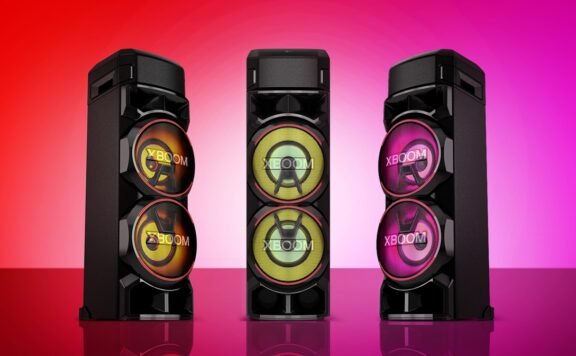ADATA Technology has launched its latest products including new compact-size Solid State Drives (SSD), overclocking memory modules DDR4 XPG Z1 /DDR3 XPG V3, and the award winning Elite CE700 wireless charging stand, which are displayed at COMPUTEX TAIPEI 2014. “Witness the Radiance of Technology” is this year’s theme for ADATA as it shows off high capacity power banks, flash memory cards, SSDs, and the inductive Elite CE700 wireless charging stand.
Gartner’s report showed the worldwide combined shipments of traditional PCs, tablets, and ultra-mobile devices are projected to reach 584.6 million units in 2014, up by 14% from 2013. Due to the limited storage of these devices, many consumers look for ways to store data from their devices on either mobile storage solutions or by uploading it to data centers. The current market has a big opportunity for ADATA to offer total Solid State Drive (SSD) solutions such as PCIe SSD, Small Form Factor SSD, and customizable industrial SSD.
The PCIe SSD technology is the latest trend of the SSD revolution sweeping across data centers since 2007. The biggest benefit of PCIe-based SSD is the increased performance. The key factor lies in the number of channels to run data through. ADATA is the first company to launch next generation PCIe SSD with a maximum storage capacity of 2TB per platter and three times faster transfer speeds than SATA III (6Gbit/s).
The increased performance loading of databases encourages many data centers to adopt PCIe SSD technology. ADATA’s new PCIe SSDs come with 2.5-inch and M.2 specifications, fitting a wide array of enterprise and business server applications.
The paralleled growth in the SSD market has also been seen in the increased sales of Ultrabooks/Chromobooks and in the ultra-mobile devices, especially tablets, where the demand for more storage space by the consumers is becoming a major issue. Due to limited physical space in ultra-mobile devices, size does matter.
To solve this, ADATA unveils μSSD (nanoSSD) and small form factor SSD with M.2 specifications, which have the incredibly compact sizes of 16x20mm and 22x30mm respectively, much smaller than an SD card. Serving as mobile add-in cards, these small form factors come with a 128GB storage capacity, the DevSLP power saving function, and a transmission speed of 550Mb/s, which makes them ideal storage solutions for mobile devices while improving the overall system performance.
The durability and operability of SSD is required to meet the rigorous demands of an industrial-level enterprise because of the harsh environments, such as extreme temperatures and constant vibrations, that will quickly damage any storage devices. With rich experience in the storage market, ADATA will introduce customizable SSD solutions, integrating with the following top features: A+ SLC option, Power Loss Protection (PLP), and firmware customization to maximize performance while increasing the standard lifespan by up to 15 times.
To decrease the risk of industrial application failure, ADATA provides a disk monitoring tool, SSD Tool Box, which gives a visual representation of the SSD information, as well as the wear-level status, which give a warn when the SSD needs to be replaced before a failure occurs.
With a significant number of ultrabooks on the market, upgrading existing storage with larger capacity can extend their usable life. The existing storage drive can be replaced with a new SSD that is 256GB or larger. Preferred products are from ADATA are mentioned above.
Even though the DDR3 has been the memory standard in the computing market for several years, it is now facing a challenge as the next generation, DDR4, is emerging as the best choice because it has double the capacity and double the speed of its predecessor DDR3. DDR4 also consumes less power.
As one of the strategic partners of Intel, ADATA will be presenting a server grade DDR4 RDIMM supporting the latest Intel Xeon processor E5-2600 v3 series, with features of 16GB density, 1.2V low power consumption, and a maximized 2133MHz high speed transmission.
ADATA will unveil its cutting-edge overclocking memory modules, DDR3 XPG V3 and the first preview of DDR4 XPG Z1. When power users tweak components to make their CPU, GPU and memory modules to run the highest speeds possible, heat is the enemy that destroys any electronic components. ADATA carefully selected the best IC components for its DDR4 XPG Z1 and DDR3 XPG V3, so that the heat will quickly dissipate through the airfoil of heat sinks and withstand overclocking. ADATA offers replaceable heat sinks with several color choices for its DDR3 XPG V3.
Graphically intense games and high-end server applications are bandwidth intensive; ADATA DDR4 memory will make computers more responsive. Some sources have reported that the earliest DDR4 shipment is scheduled on third quarter of 2014. Servers and enterprise DDR4 memory modules will be available before the desktop modules. By that time, ADATA will be ready to supply to both server/enterprises and desktop clients and users.
ADATA has also announced its d&i award winning product, the CE700 wireless charger. This device uses inductive charging, allowing users to recharge their smart phones by placing it on top of the CE700 with no more messy plugs or cables. Besides the CE700 wireless charger stand, ADATA offers other charging option through its diversified power banks.




